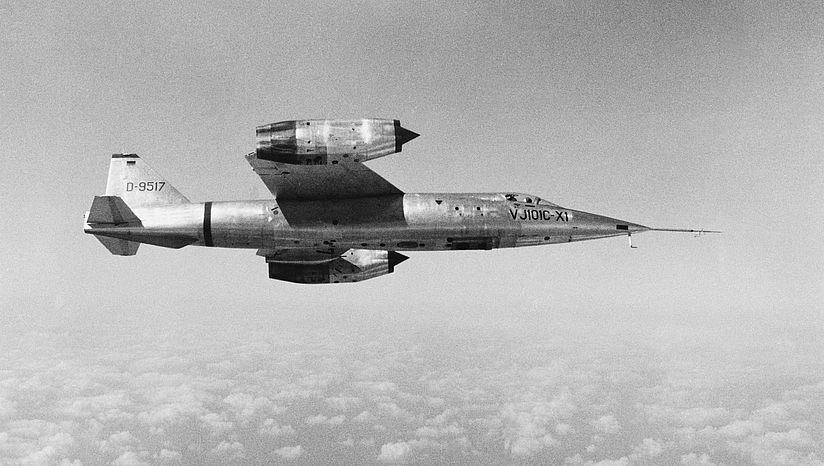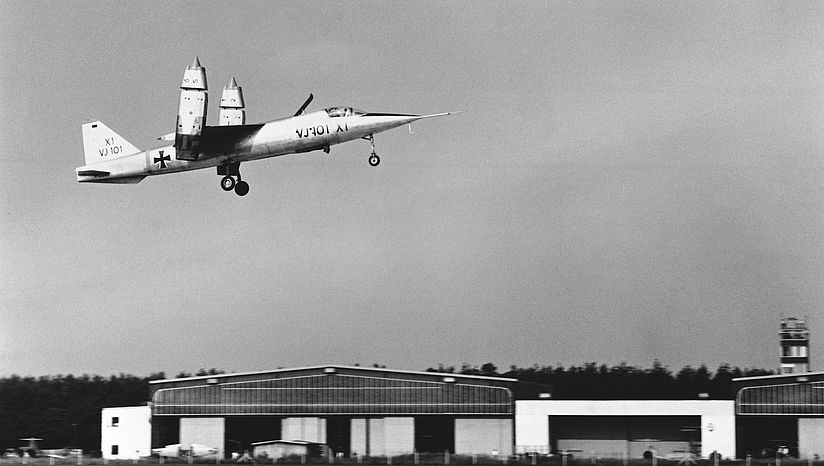VTOL Aircraft
VJ 101 C-X2
The VJ 101C is an experimental aircraft for a vertical take-off interceptor fighter as a successor to the Lockheed F-104G Starfighter.

The first prototyp VJ 101 C-X1 in aerodynamic flight. Photo: Deutsches Museum

VJ 101 C-X1 during the transition from hovering to forward flight. Photo: Deutsches Museum
Due to changes in military requirements in the meantime, it did not go into series production.
Characteristic are the swivel engines mounted at the wingtips and the lift engines in a fixed position behind the cockpit. The triangular arrangement of the engines allows stabilisation and control around all axes in hover flight by changing the engine thrust. During the transition from hover to forward flight, the engines at the wingtips slowly pivot into the horizontal position.
The first prototype (X 1) performed its initial hover flight on 10 April 1963 at the EWR flight test centre in Manching. In the following year it became the first vertical take-off aircraft and the first German aircraft to reach supersonic speed (Mach 1.08). After the loss of the X 1, flight-testing continued in 1965 with the X 2. By 1971, it had achieved a total flight time of 14 hours in 325 test flights.
Technical specifications:
- Manufacturer: Entwicklungsring Süd, München (Bölkow-Entwicklungen KG, Ottobrunn; Ernst Heinkel Flugzeugwerke GmbH, Speyer; Messerschmitt AG, Augsburg), 1965
- Length: 15.6 m
- Wingspan: 6.6 m
- Take-off weight: 7,650 kg
- Maximum speed: 1,320 km/h at an altitude of 6 km
- Power plant: 4 x RB.145R, 2 x RB.145
- Thrust: 4 x 15.8 kN, 2 x 12.4 kN
